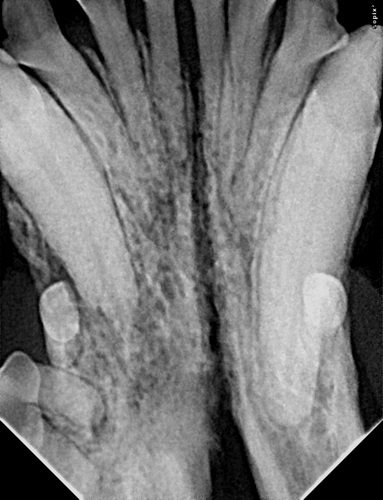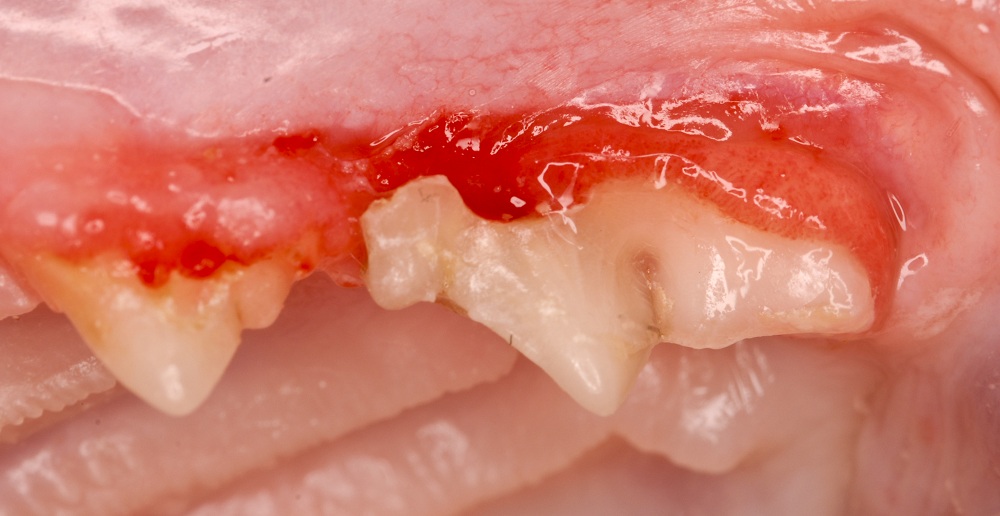Feline Oral Resorptive Lesion
What is tooth resorption?
Tooth resorption is a process by which the dentin (a hard tissue that lies beneath the enamel of the tooth) in a tooth (or teeth) erodes and eventually becomes irreparably destroyed. Over time, all areas of an affected tooth may become involved.

What are the causes of tooth resorption?
There are many possible causes for tooth resorption. However, tooth resorption in cats is referring to a specific and painful condition. In the past, tooth resorption was referred to as feline oral resorptive lesions, feline odontoclastic resorptions, cavities, caries, cervical neck lesions, external or internal root resorptions, and cervical line erosions.
The most commonly affected teeth are the premolars of the lower jaws (specifically the third premolars). In one study, 53% of the cats in the study had an obvious tooth resorption lesion and almost 50% of the time where no obvious lesion was noted clinically, radiographs (X-rays) revealed one.

Are there different types of tooth resorption?
Tooth resorption in cats is divided into specific types based on the radiographic (X-ray) appearance of the root. Radiographs of a normal tooth show the root as having a characteristic density and there is a thin dark outline around the root separating it from the bone. The dark outline represents the periodontal ligament, a normal anatomic feature which attaches the root to the bone.
With Type 1 tooth resorptions, there is destruction of the crown, but radiographically, the root retains a normal appearance with an easily discernible periodontal ligament.
With Type 2 tooth resorptions, radiographically the root appears to be disintegrating and not easily discernible from bone. This is referred to as replacement resorption.
While the cause for tooth resorption remains unknown, Type 1 tooth resorption has been linked to periodontal disease. Whatever the underlying cause, the end result is loss of the outer hard tissue of the tooth (enamel, cementum, and dentin). Both types of lesions can affect the crown of the tooth as well as the root. Lesions that affect the tooth crown are very painful and require treatment.
How do I know if my cat has tooth resorption?
Once the sensitive dentin is exposed, tooth resorption is painful and manifests as muscular spasms or trembling of the jaw whenever the lesion is touched.
If your cat has tooth resorption, she may show increased salivation, oral bleeding, or difficulty eating. In many cases, without radiographic and clinical screening in an anesthetized cat, tooth resorption will go undetected and the cat will be in pain in silence. Annual thorough examinations with radiographs are recommended for maintenance of oral health and early detection of disease.




